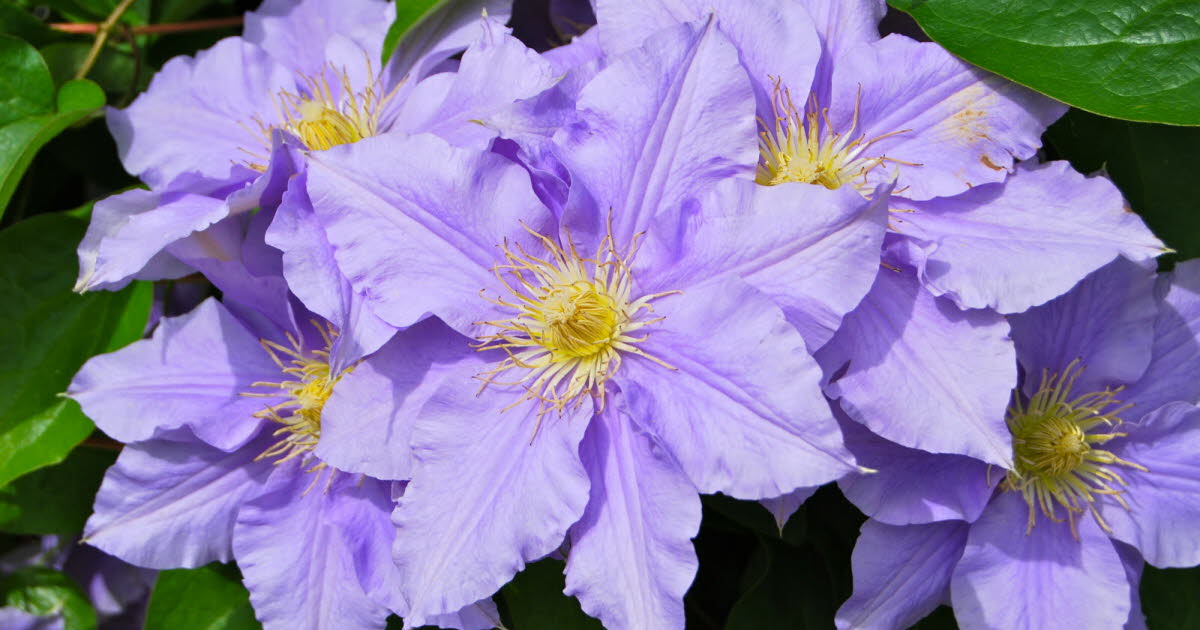Which varieties to choose?
Alpine clematis (Clematis alpina), its close relative large-flowered (Clematis macropetala) and mountain clematis (Clematis montana) are the first to bloom in spring.
If you choose them, you will not be disappointed. While large-flowered hybrids can fall victim to the dreaded wilt disease, wild species are resistant and their cultivated forms are spared from the disease.
They are also less demanding. Any bright place is suitable for them.
Where to plant them?
Clematis are climbing woodland plants that prefer to have their head in the sun and their feet in the shade.
In newly landscaped gardens, shade the area around the plant with well-rotted compost or bark mulch.
Varieties of blue alpine clematis, such as the fragrant ‘Blue Princess’ or ‘Frances Rivis’, also bloom in shadier situations.
As long as we don’t pour soil with stagnant moisture on them, they feel good in any garden soil. However, they are demanding on water.
What kind of support should you offer clematis?
Clematis can display their acrobatic abilities only if they are installed on suitable supports. In nature, it clings to thin branches with the help of petioles.
In the garden, tightly tensioned wires provide good support. If you decide on grids and stakes in the shape of a net, the mesh size must be less than ten centimeters, the wooden blocks must be made of thin sticks.
The support must be strong enough to support the weight of the plant loaded with rain. Long clouds of flowers also appear on walls, railings or fences.
How to properly maintain them?
Spring blooming clematis do not need a cut. After flowering, plants that are too large or too old are simply cut back to the required dimensions.
Alpine and mountain clematis bloom on last year’s wood. A cut would deprive you of flowering the following year.
Plants look best when you let them grow as they please, even if they exceed the height of the trellis.

